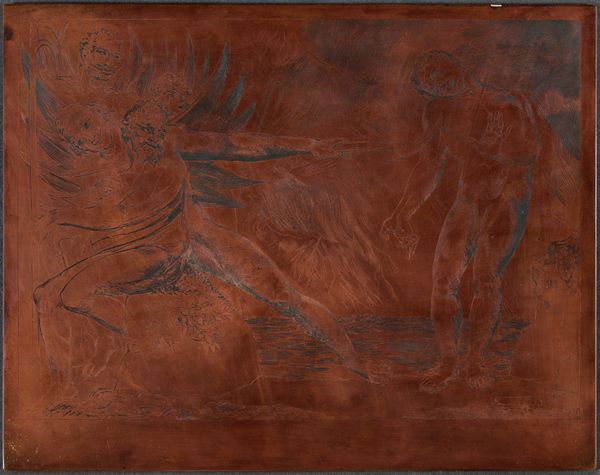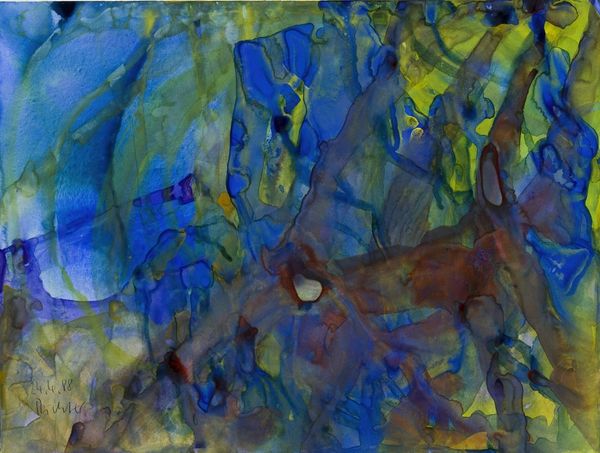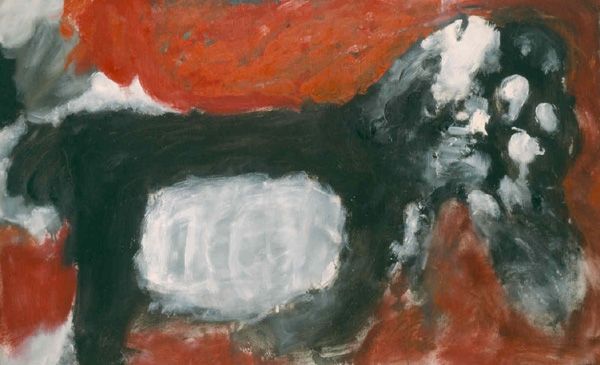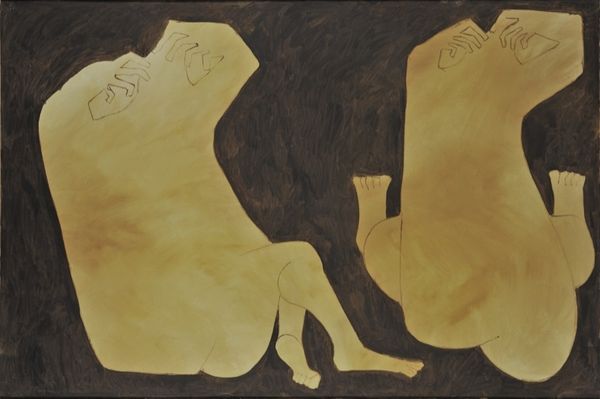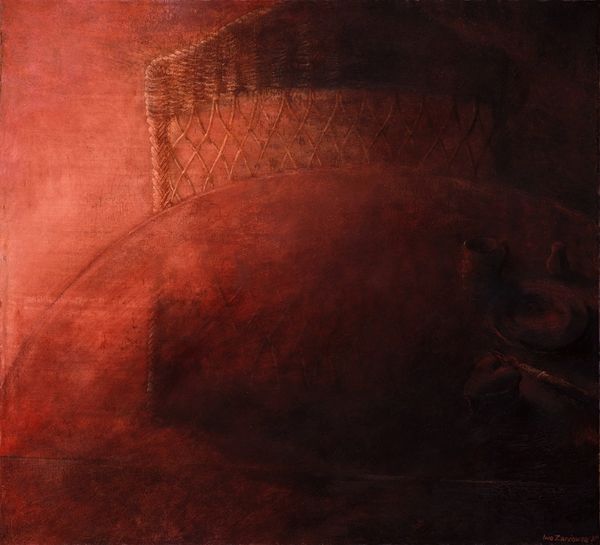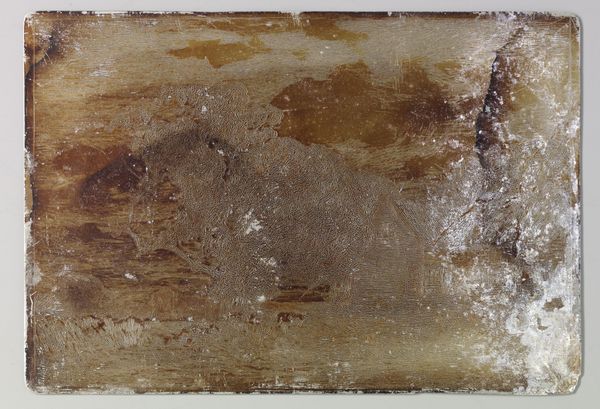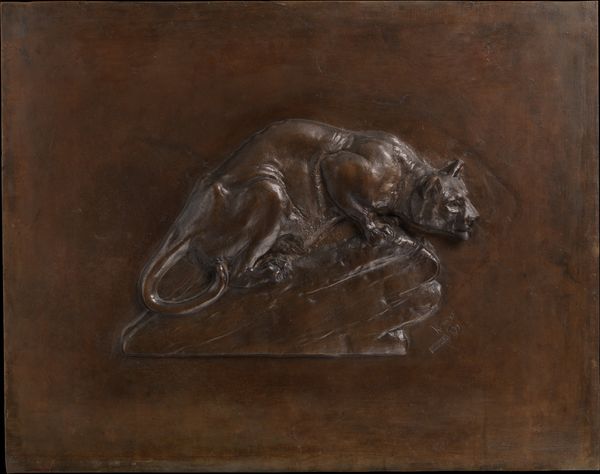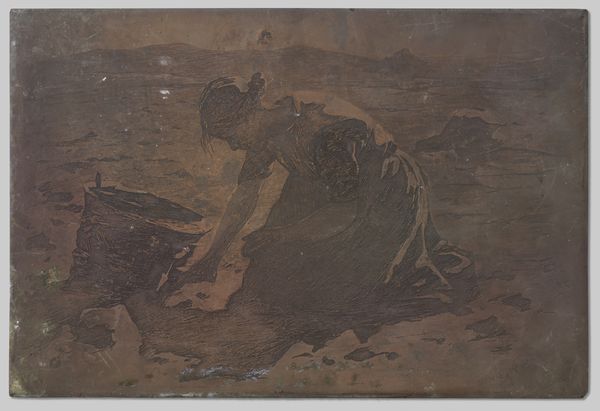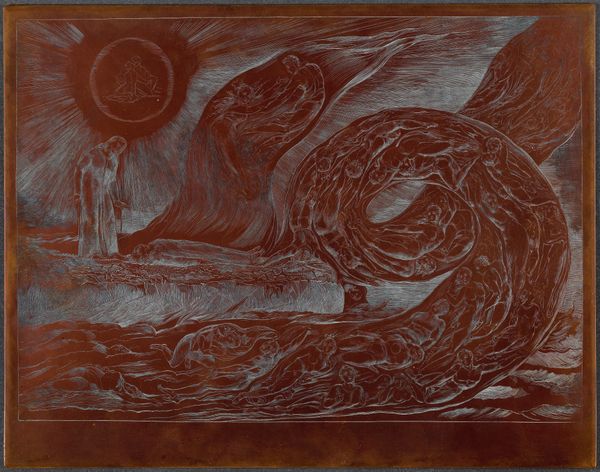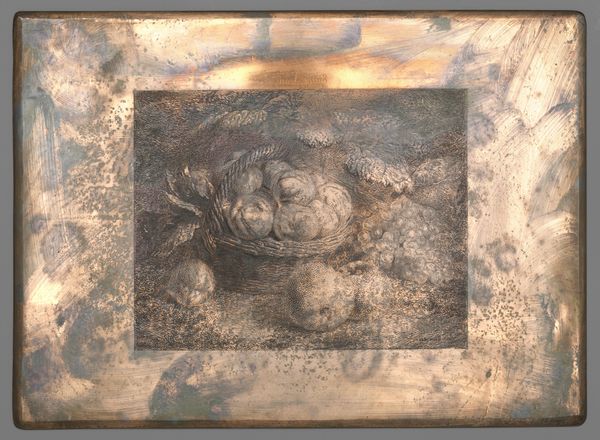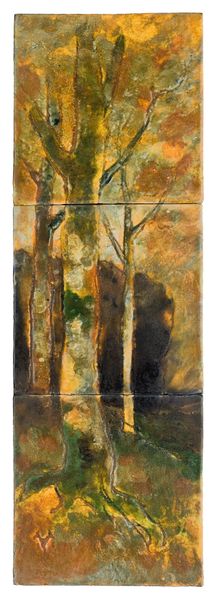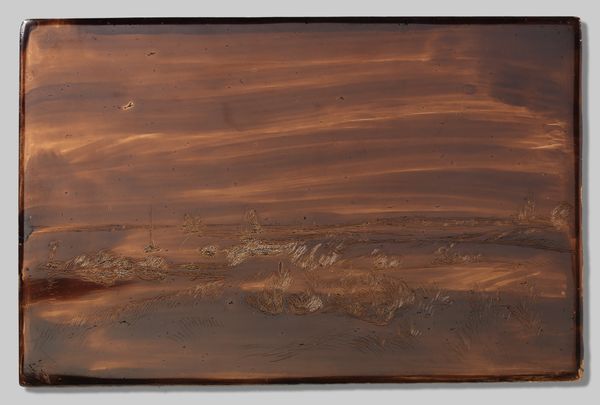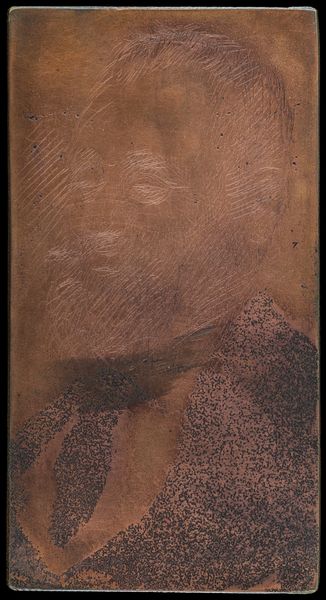
oil-paint, impasto
#
portrait
#
abstract-expressionism
#
abstract expressionism
#
animal
#
oil-paint
#
figuration
#
impasto
#
modernism
Dimensions: 6 x 8 cm
Copyright: Rudolf Láng,Fair Use
Curator: Let's discuss Rudolf Láng's "Lion," painted in 1956. It’s an oil on canvas work. Editor: My first impression? Melancholy. It's all earthy tones, browns and muted reds, like a lion fading into the shadows. Curator: Indeed, Láng's use of impasto contributes to the weightiness. One can almost feel the density of the paint, reflective of the labor and physicality of creation, but it also evokes the lion's muscularity. Do you get a sense of how this contributes to modernism in terms of materiality? Editor: Oh, absolutely. The thick paint almost obliterates the subject. It’s less about depicting a literal lion, more about evoking its essence through texture. It makes me think about my grandfather's garden, how the soil itself holds memories. Here, the pigment feels like earth—ground and almost primal. Curator: Interesting analogy. The materiality evokes its connection to nature while aligning with abstract expressionism's broader aims to prioritize the expressive act of painting. The canvas functions less as a picture plane and more as the site of action, of existential grappling made manifest through Láng's application of the medium. How do you see that grappling emerge? Editor: There’s a real tension between figuration and abstraction. The lion is barely there, swallowed by the brushstrokes, and I wonder if Láng wrestled with the symbolism. Maybe he was grappling with power and vulnerability simultaneously, hiding and revealing the king of beasts at once. Maybe all power eventually crumbles into formlessness. Curator: That reading opens it up beautifully! Thinking about post-war anxieties around figure and form within a shifting political climate and a reconsideration of figuration itself makes sense of that tension. Láng certainly used material to his conceptual advantage. Editor: The material, in that sense, is as charged as the subject itself. The brushstrokes become a kind of emotional shorthand. And it works! It gives me a slightly uneasy feeling. Curator: I'd say this discussion illuminated some unexpected corners of Láng's artistic and cultural context. Editor: Agreed, the shadow of the lion makes us want to re-examine these boundaries. It roars a little.
Comments
No comments
Be the first to comment and join the conversation on the ultimate creative platform.
